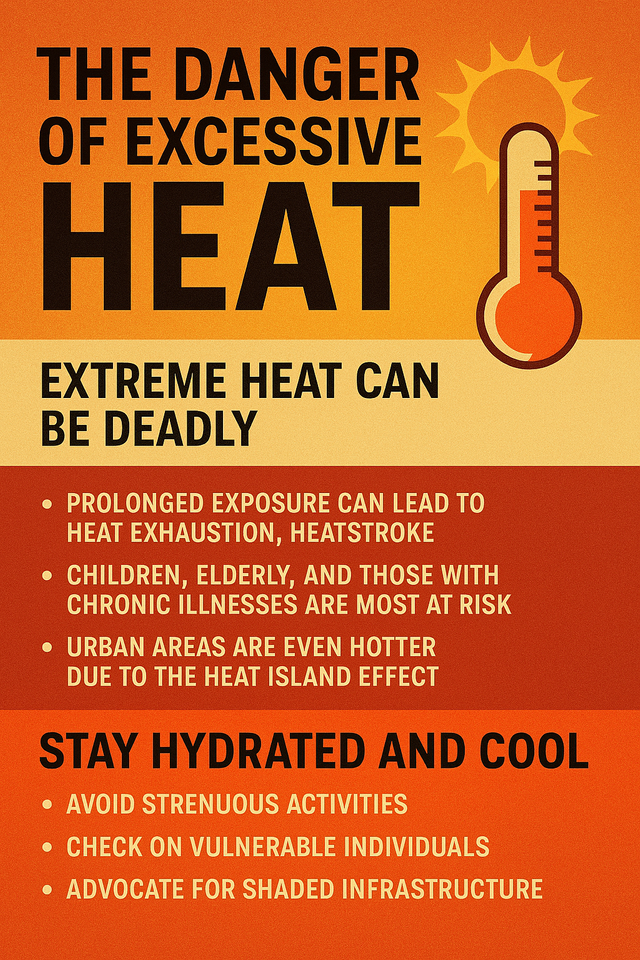The Hidden Danger of Excessive Heat: A Silent Threat We Must Not Ignore
As climate change accelerates, extreme heat is emerging as one of the most underestimated threats to human health and safety. It’s not just about sweaty discomfort or sunburns—heatwaves are claiming lives, straining infrastructure, and reshaping ecosystems. And yet, many still treat them as seasonal nuisances rather than the public health emergencies they truly are.
🌡️ Why Excessive Heat Is So Dangerous
High temperatures can wreak havoc on the human body. When the heat index rises, our ability to regulate internal temperature is compromised. This can lead to:
- Heat exhaustion: Symptoms include heavy sweating, weakness, dizziness, nausea, and fainting.
- Heatstroke: A life-threatening condition where the body’s temperature rises above 40°C (104°F), potentially causing brain damage or death.
- Dehydration and kidney stress: Especially dangerous for children and the elderly.
- Increased cardiovascular strain: Heat forces the heart to work harder, which can trigger heart attacks or strokes.
Beyond individual health, extreme heat affects entire communities. Power grids are pushed to the brink as air conditioning demand surges. Roads and railways buckle. Crops wither. And in cities, the urban heat island effect—where concrete and asphalt trap heat—can make temperatures several degrees higher than in surrounding rural areas.
👥 Who’s Most at Risk?
While everyone feels the heat, some groups are disproportionately affected:
- Elderly people, whose bodies are less efficient at cooling down.
- Infants and young children, who dehydrate quickly.
- Outdoor workers, such as farmers, construction crews, and delivery drivers.
- People with chronic illnesses, especially cardiovascular or respiratory conditions.
- Low-income communities, often lacking access to cooling systems or green spaces.
🌍 The Bigger Picture: Climate Change and Heatwaves
Heatwaves are becoming longer, hotter, and more frequent due to global warming. According to climate scientists, what was once considered a “once-in-a-decade” heatwave may now occur every few years. In some regions, temperatures are reaching record-breaking highs that were previously unimaginable.
This isn’t just a weather anomaly—it’s a symptom of a planet in distress. And unless we take bold action to reduce greenhouse gas emissions, these heatwaves will continue to intensify.
✅ What Can We Do?
We can’t control the weather, but we can control how we respond to it. Here are a few steps to protect yourself and others:
- Stay hydrated: Drink water regularly, even if you’re not thirsty.
- Avoid peak heat hours: Typically between 11 a.m. and 4 p.m.
- Wear light, breathable clothing and use sunscreen.
- Check on vulnerable neighbors, especially the elderly or those living alone.
- Support climate-resilient infrastructure: Advocate for more trees, shaded walkways, and cooling centers in your community.
💬 Final Thoughts
Extreme heat is a silent killer. It doesn’t make headlines like hurricanes or floods, but its impact is just as devastating. As individuals, we must stay informed and prepared. As communities, we must push for policies that protect the most vulnerable. And as a global society, we must confront the root cause—climate change—with urgency and resolve.

